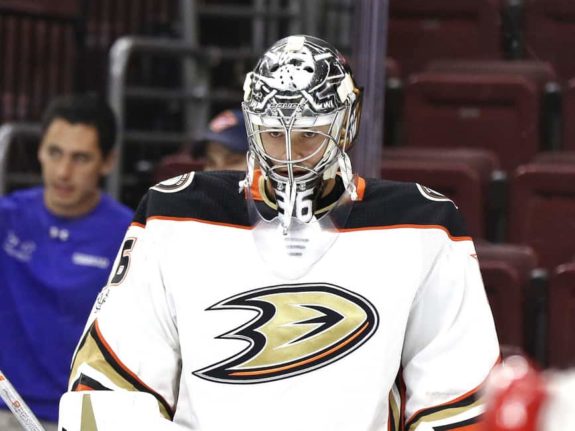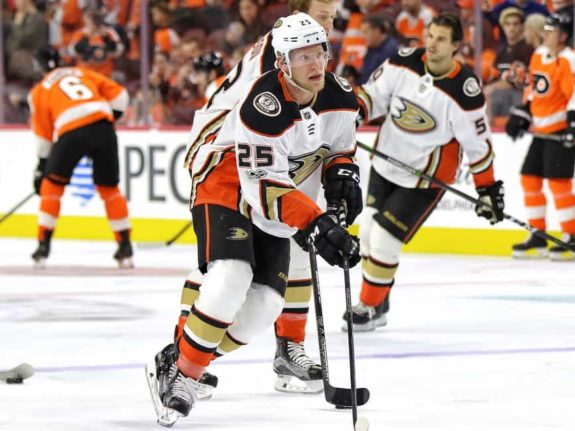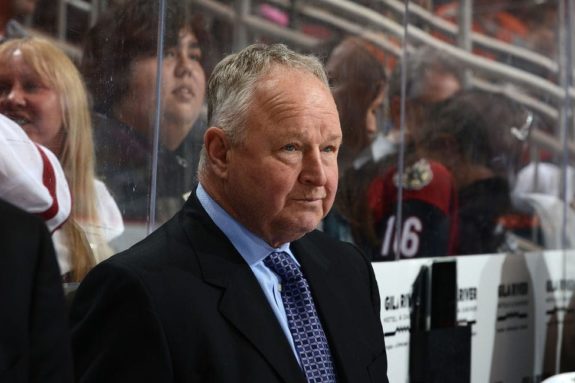Now ten games into the season, the Anaheim Ducks have a shot differential of -140. To put that into perspective, the Ottawa Senators, generally expected to be a bottom-dweller for the 2018-19 season, have the second-worst shot differential at -64.

Although they are tied with the San Jose Sharks at the top of the Pacific Division, something is very, very wrong in Anaheim, and it all comes back to the defensive zone, from where the Ducks are struggling to get out. By the time they get the puck out, the Ducks on the ice are exhausted and need a change, leading to minimal time in the offensive zone and an abysmal amount of shots for.
What’s causing these defensive zone woes?
A Broken Roster
In a league as competitive as the NHL, it’s difficult to keep pace with other teams when you have even one key injury. The Ducks, per tradition, have already suffered a mind-numbing amount of injuries. In their first ten games they’ve missed Ryan Getzlaf, Ryan Kesler, Jakob Silfverberg, Corey Perry, Carter Rowney, Ondrej Kase, and Patrick Eaves for stretches of time.
Kase suffered a concussion in the final preseason game and Eaves has only played two games since the 2016-17 season due to a terrible health affliction classified as “post-viral syndrome that caused his body to “neurologically shut down,” (“Patrick Eaves ready for return after ‘pretty scary’ health problem,” The Star – 7/31/18). Both have yet to take the ice during the 2018-19 season.

Although some Ducks rookies have stepped up in place of their injured teammates, their play doesn’t match that of established veterans. The depleted roster makes it difficult to generate any kind of chemistry or offensive pressure. As the Ducks veterans return to the lineup, it’s possible that the lines will stabilize and offensive numbers will improve.
Nick Ritchie played his first game of the season on Tuesday after contract negotiations went south during the offseason. He slotted in with Getzlaf and Rickard Rakell on the top line and was a natural fit, adding a sorely-missed physical presence in front of the net and along the boards. Additionally, Kase and Eaves traveled with the team on their road trip, a sign that their season debuts may not be far off. It’s unclear, however, whether or not their presence will be enough to mask a failing system.
A Shaky New System
Coach Randy Carlyle has been forced to work with a very limited set of tools but, as the saying goes, “A bad carpenter blames his tools.” During the offseason, general manager Bob Murray stressed that he wanted to see a new system implemented which focused on moving the puck with speed and pushing the pace to generate more dangerous scoring opportunities instead of a slower, more controlled game.
Most will scoff at the words “speed” and “shots” mentioned in connection with Carlyle’s name. Known for his dump-and-chase system that put an emphasis on quality of shots over quantity, Carlyle’s teams have had less-than-impressive shot differentials. During the 2018-19 preseason, the coach’s new system actually looked like it might work and towards the final games, the Ducks were playing well. It was exciting, mostly successful hockey.

Once the puck dropped on the Ducks’ season opener against the Sharks, however, that changed quickly. The team has been unable to get out of the defensive zone, coughing up turnover after turnover at the blue line or in the neutral zone and are forced back into their zone to defend again. Goaltender John Gibson has taken a beating, including against the Dallas Stars when the Ducks gave up 30 shots in one period.
https://twitter.com/MikeKellyNHL/status/1054034009112694784
There are two main issues with the system: When the defensemen get the puck, there are no forwards to make an outlet pass to. Everyone is already on the opposite side of the neutral zone, looking to jump into an offensive zone attack, but no one is ready to actually start the attack. Their opponent’s forwards are hovering between the Ducks defensemen and forwards, picking off passes left and right.
The second issue is that instead of skating the puck out and looking for a better opportunity, the Ducks defensemen are content to make terrible stretch passes that go directly to the opposing team. When pressured, they rim the puck around the boards where forwards, particularly the rookies, are consistently losing the puck battles. They seem confused about who’s job it is to get the puck out of the zone.
Aside from goaltending, the entire Ducks team is a mess.
A Lackluster Effort
Issues with a new system aren’t particularly surprising. It takes time to work out the kinks and get everyone on the same page, even if that page is one that doesn’t work very well. What is surprising, and not as easily forgiven, is the lack of effort from many of the Ducks’ veterans. Minus a few exceptions, very few players have been able to string together more than one solid performance in a row. At both ends of the ice, passes have been completely off the mark, skates haven’t been moving, and there’s been a serious lack of physicality.
Are the veterans not buying into the new system? It’s possible but seems unlikely. After a preseason loss, Cam Fowler wasn’t fazed. He believed that the new system suited his playing style (“Ducks Unveil Shaky Up-Tempo Style in Exhibition Loss, OCRegister – 9/19/18) and he’s right. Smooth skaters like him, Rakell, Brandon Montour, and Andrew Cogliano would flourish if the system was working properly.

And yet, all four of them have been mostly invisible with the list of disappointing performances going beyond them. Perhaps there’s some rust, or maybe it’s the unfamiliarity with new players, but the only Ducks player that has seemed comfortable and focused in every game is Gibson.
Next Steps for the Team
Toward the end of their most recent game against the Chicago Blackhawks, the Ducks looked like a real team. They were skating hard, making crisp passes, and actually taking shots. The effort was there and the system was mostly working. In other words, it can be done. Forwards need to come back and help their defensemen get the puck out of the zone. In return, the defensemen need to make smarter passes. Everyone needs to improve their physical play, especially along the boards.
If these three things happen, Gibson and Ryan Miller will face far fewer shots and the offense might get enough offensive zone time to gel and do something. From there, minor tweaks can be made to continue improving the system and the results will be much better – not only for the team but also for their fans, who are growing more and more frustrated.
There’s a tension building and it seems as though something is about to snap. Time will tell whether that snap is the sound of the Ducks’ streak of poor play coming to an end or of Gibson breaking his stick out of frustration.